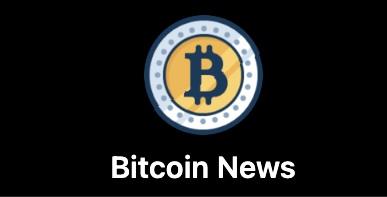Enquires@newsofbitcoin.com
A view of the New Year’s Eve ‘2024’ Numerals (Photo by Lokman Vural Elibol/Anadolu via Getty Images)
2023 was quite a turbulent year for the digital asset industry, with the ongoing saga of FTX, Silicon Valley Bank collapse, massive fines and penalty of Binance, among others. The corner seems to be turning and 2024 is kicking off with great momentum across multiple fronts.
Bitcoin
BTC
Positive market sentiment has returned, with Bitcoin (BTC) showing once again why it is an increasingly relevant asset. With the imminent launch of spot exchange-traded funds (ETF) across the globe, and the upcoming halving in April, one can only imagine where it’ll be by the end of the year. It is important to note that while spot BTC ETF offerings by the likes of BlackRock
BLK
Fiat-backed Digital Currencies
Stablecoins, tokenized deposits and central bank digital currencies (CBDC) are also pushing hard into the ideation of “international finance 2.0”, and the dominance of the US dollar based global economy may start to see some divergence through these new types of digital currencies in direct cross-border transactions and 24/7 real-time settlements.
Local currency pegged stablecoins have made a comeback over the past few months, though their respective circulations still dwarf those that are USD-based. With new stablecoin regulations and consultations announced in Japan, Singapore, Hong Kong, United Kingdom and others, the gap will narrow and create new currency-to-currency dynamics between economies. In the meantime, it has been reported that over 70% of the world’s central banks have experimented with CBDCs, highlighted by various projects in collaboration with the Bank for International Settlements (BIS), including Project mBridge, Guardian, Mariana, among others.
Evolving Landscape for Digital Infrastructure
The layer-1 (L1) infrastructure conversations have mostly settled into a few clear winners, whereas the battleground for layer-2 (L2) and rollup rages on. Ethereum
ETH
SOL
Layer-2 scaling solutions have sprung up across the globe, offering varying alternatives to provide additional capabilities to improve scalability, privacy and cost-effectiveness. Numerous Zero-Knowledge (ZK) rollups have entered the market, though in time these will be commoditized and the emphasis being placed back on applications and protocols that provide cross chain interoperability, but more importantly, interconnectivity between traditional finance (TradFi) and decentralized finance (DeFi).
Not to be outdone, development of layer-2 solutions on the Bitcoin network have accelerated as well, as the new BRC-20 token standard has driven significant transaction volume on the main chain. One of the benefits of BRC-20 is that everything happens completely on-chain without the use of smart contracts or other centralized mediums, a big step towards trustless network operations. This is where a layer-2 solution can take a lot of the token minting and trading transactions off the main chain without driving up transaction fees on the network.
Regulatory Frameworks move into High Gear
On the regulatory front, global policies around centralized finance (CeFi) have mostly been enacted with similar levels of consistency and protectionary measures. The EU implementation of MiCA has established best practices for others, while jurisdictions vying to be digital asset centers have begun to advance towards policy frameworks for stablecoins, DeFi, decentralized identity and self-hosted wallets. This is further aided by tremendous research and development from international standards setting bodies such as IOSCO and Financial Stability Board (FSB), further moving the overall industry into a maturing regulatory environment. The Crypto Council for Innovation has published a recap of crypto policy in 2023 to provide additional insights.
My Observations for the Upcoming Year
1/ The launch of tokenized real-world assets (RWA) on “public networks” will continue, further showcasing the benefits of open sourced technology and decentralized infrastructure.
2/ USD based stablecoins will stay strong though its 90+% dominance will start to decrease. EURO, Yen and USD-pegged currencies (HKD, AED) will take on more market shares.
3/ Web3 will appear in more government development announcements than before, highlighting the importance of this new form of digital economy especially in the East.
4/ Bitcoin will take on larger shares in investment portfolios across major funds and corporate treasuries.
Read More: Crypto Market Insights: Turning A Corner In 2024
Disclaimer:The information provided on this website does not constitute investment advice, financial advice, trading advice, or any other sort of advice and you should not treat any of the website’s content as such. NewsOfBitcoin.com does not recommend that any cryptocurrency should be bought, sold, or held by you. Do conduct your own due diligence and consult your financial advisor before making any investment decisions.


